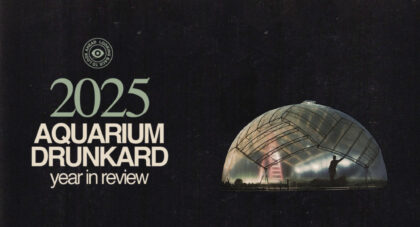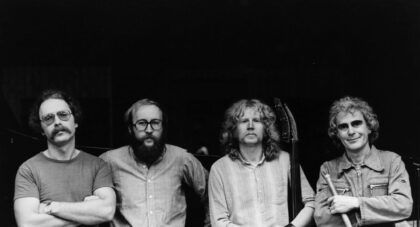The genesis of Breadwoman stretches back to the early '80s, when performance artist Anna Homler found herself singing while driving through Topanga Canyon, chanting out in a strange, rhythmic cadence. Homler's melodies weren't from any language she recognized, but felt like more than just absentminded moans or nonsensical babbles to her. "I still remember the moment," Homler says via the telephone. "It was a language I didn’t know but it was musical and melodic."
She began to tape these songs, and a few years later teamed with experimental composer Steve Mosier to shape them into an album called Breadwoman, named for a character she'd developed around the songs: a woman, her face and body obscured by bread, an mythic representation of a woman "so old, she'd turned to bread." Released in 1985, the album represents the intersection of experimental art, tape culture, and electronic music in Los Angeles in the 1980s. It's collected, along with two more compositions, as part of RVNG Intl.'s Breadwoman & Other Tales. The collection is beautiful and otherworldly, Homler's glossolalia drones playfully weaving in and out of Mosier's bending synth melodies, sound effects, and rhythms. There are nods to various cultures -- tonal similarities to African, European, and Native American musics -- but their experiments feel untethered to specifics, not so much "world music" as "other world music."
Since the first Breadwoman experiments, Homler's thrived making art and music, with Mosier and others, like English violinist Sylvia Hallett (their 2012 album, The Many Moods of Bread and Shed, is particularly worth checking out) but the new reissue has brought her focus back to the Breadwoman character and concept. She discussed it with Aquarium Drunkard.
Aquarium Drunkard: When you first began singing on that Topanga drive, what were you thinking? Were you asking yourself, "What is this?"
Anna Homler: I wasn’t thinking at all.
AD: How did you realize you weren’t just humming or singing absentmindedly?
Anna Homler: I recorded it. In those days, we all drove around with little cassette players. I just taped over one of my cassettes. I noticed that every time I got in my car, the songs would just sort of come to me. [They would come] when I was washing dishes, just doing any sort of mindless task. They would be there. I recorded them, paid attention to them, and that’s why I think they didn’t just disappear into the air.
AD: What term would you use to describe what you were doing? Did you feel like you were channeling or receiving something?
Anna Homler: I felt like [the music was] deep inside of me, not that it was something coming through me. It was something that was a part of me. They were cellular songs, very organic sounding.
Only the good shit. Aquarium Drunkard is powered by its patrons. Keep the servers humming and help us continue doing it by pledging your support.
To continue reading, become a member or log in.


